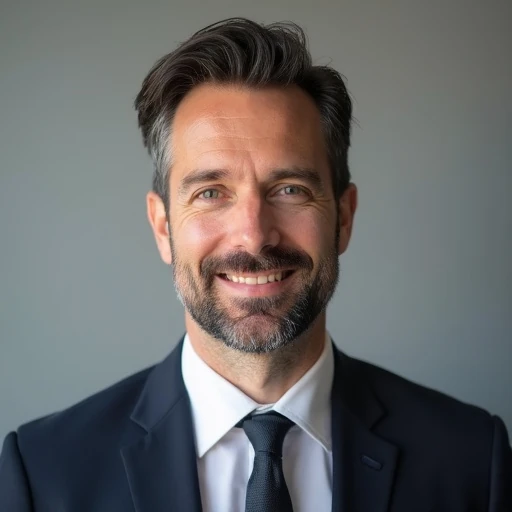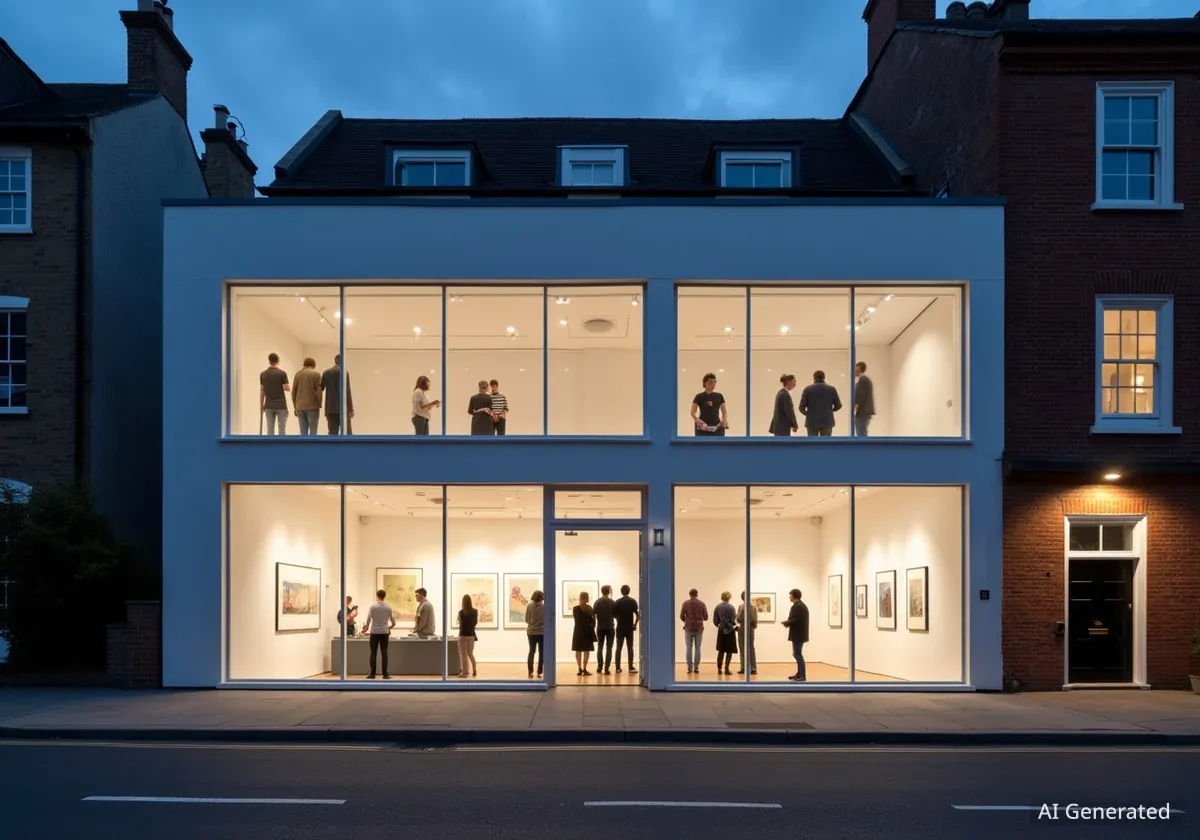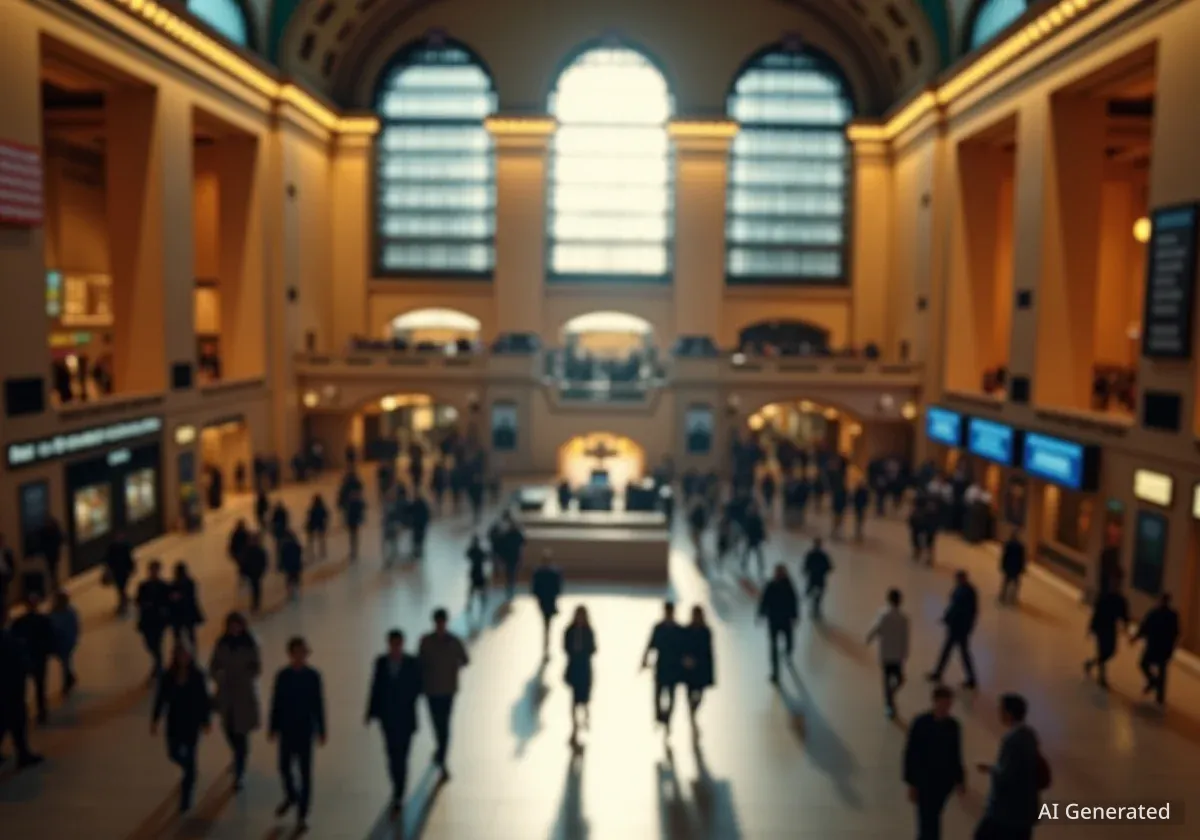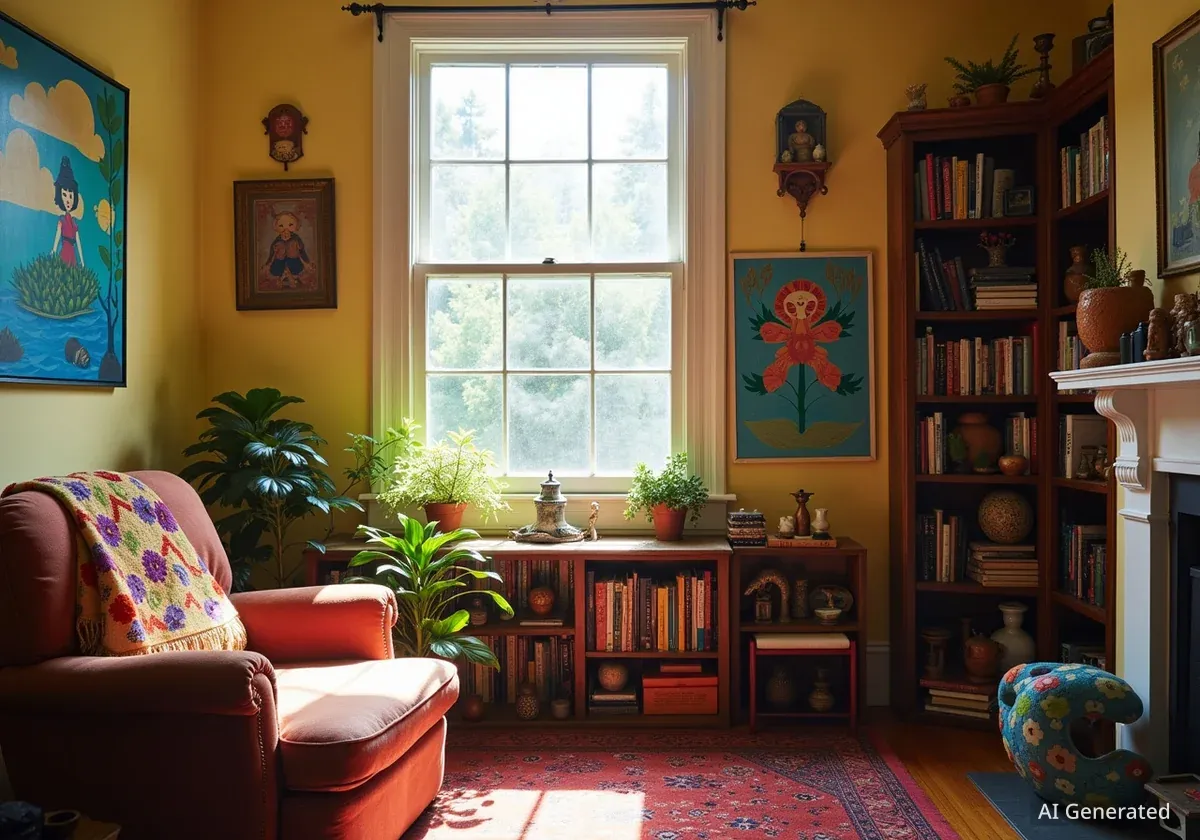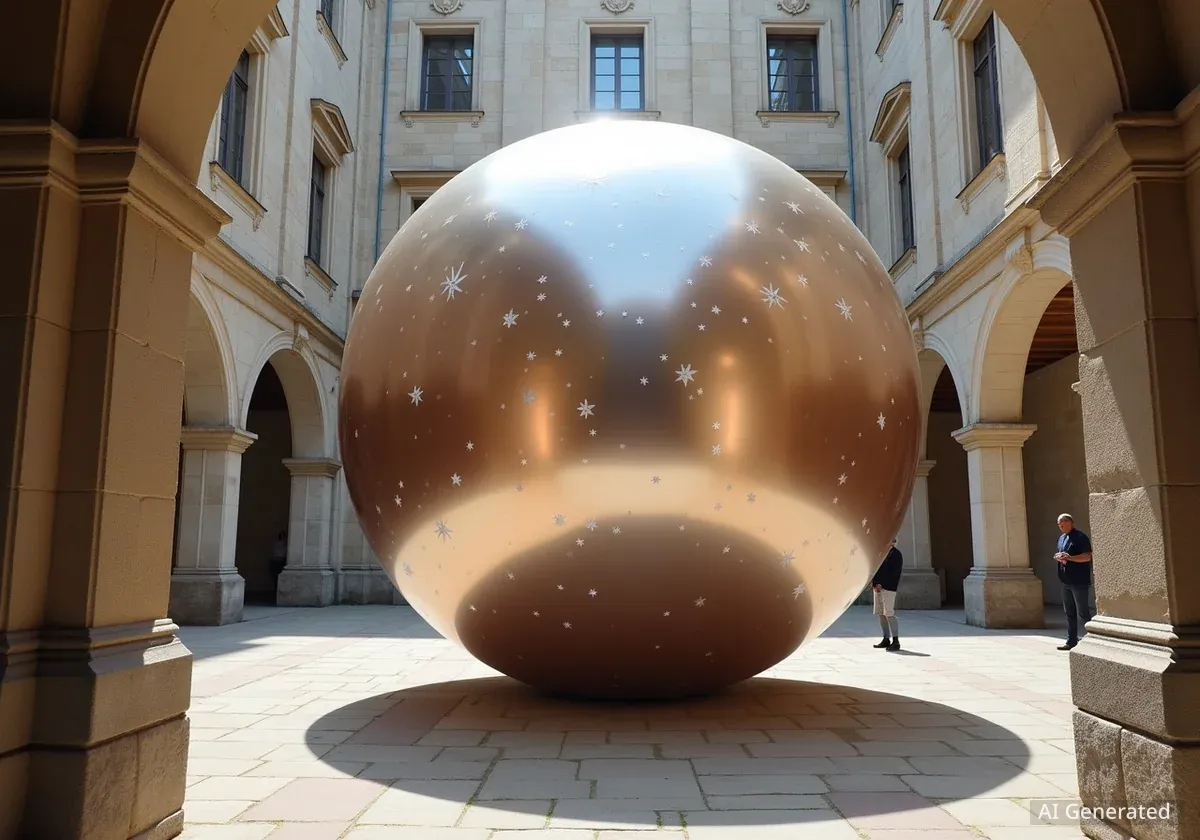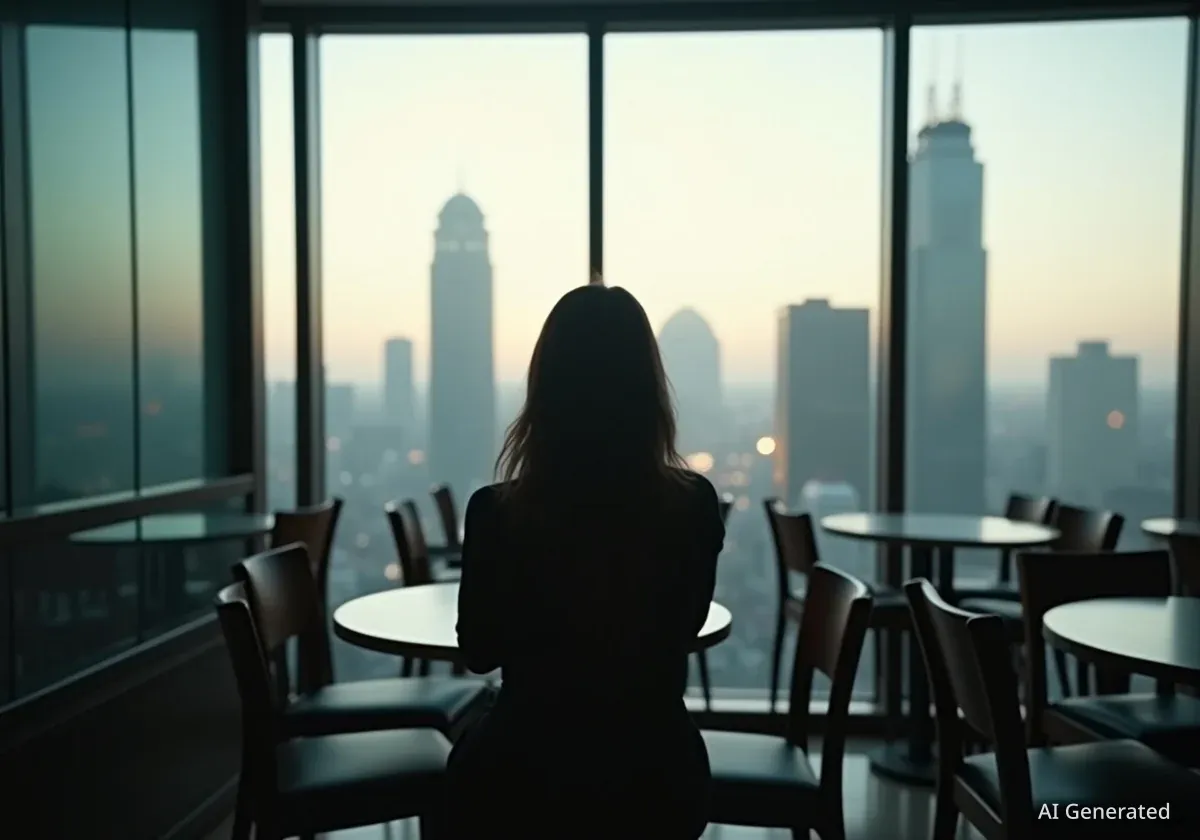A new exhibition featuring the work of renowned German photographer Andreas Gursky has opened at White Cube Mason’s Yard in London. The show presents 16 pieces, showcasing Gursky’s wide range of photographic styles, from his signature large-scale, digitally manipulated images to more intimate and spontaneous works, including several new creations. This exhibition offers a fresh perspective on an artist celebrated for his detailed and complex visual narratives.
Key Takeaways
- Andreas Gursky's new exhibition is now open at White Cube Mason’s Yard.
- The show features 16 diverse works, including ten new pieces.
- Gursky's style ranges from epic panoramas to smaller, personal snapshots.
- His famous 'Rhein II' once held the record for the most expensive photograph sold.
- The exhibition highlights Gursky's interest in how we perceive the world through photographic fragments.
Gursky's Evolution in Photography
Andreas Gursky began his career capturing black and white landscapes with a handheld camera. However, in the 1990s, his approach shifted significantly. He moved towards large-scale, digitally stitched panoramas. These images became his hallmark, depicting intricate details of various subjects.
His notable works from this period include scenes of stock exchanges, factories, Amazon warehouses, and 99-cent stores. He also photographed Olympic skiers and crowds at major events, such as a Madonna concert. This transition marked a pivotal moment in his artistic journey.
Fact: Record-Breaking Sale
In 2011, Gursky's 1999 photograph Rhein II sold for $4.3 million (£2.7 million) at auction. This price was nearly double its estimated value, making it the most expensive photograph ever sold at that time. The record was held until 2022.
Gursky's rising prominence was evident as his works started appearing in luxury stores. He recalled, "My works were selling for more and more." This commercial success further cemented his status in the art world. The artist’s ability to capture vast, detailed scenes resonated with collectors and critics alike.
The Creation of Complex Images
Gursky’s large-scale photographs are known for their complexity. Many pieces require several years to complete. On average, he produces about three finished works annually. His process involves taking multiple pictures, sometimes from different locations. He then digitally combines these segments to form a single, often impossible, image.
The ambition, complexity, and sheer scale of Gursky's photographs often lead to comparisons with paintings. He emphasizes the importance of size in his work. "They’re really done as big as I can," Gursky stated. "You can’t get bigger technically."
Background: The Düsseldorf School
Gursky studied under Bernd Becher at the Kunstakademie in Düsseldorf. Becher, along with his wife Hilla, was instrumental in establishing the Düsseldorf school of photography. This movement encouraged a detached, objective approach to documentary photography, often focusing on industrial landscapes and architecture. Gursky's early training here significantly influenced his detached perspective.
Despite the extensive effort involved in creating his images, Gursky remains unfazed if viewers do not fully grasp the process. He simply shrugs at the suggestion, focusing instead on the final visual impact of his art. His dedication to meticulous construction is a defining characteristic of his practice.
A Diverse New Exhibition
The White Cube exhibition features a collection of works that Gursky describes as his most varied to date. Despite only having 16 pieces, the show includes significantly different types of photographs. Among them is Gas Cooker, an early work from 1980. This piece offers a slightly elevated view of a stovetop in his student flat, with its three rings illuminated.
Another image captures German activists protesting tree destruction in a village. Their German sign translates to: "The view from here is shit." This work demonstrates Gursky's occasional engagement with social commentary.
"I don’t think I’ve ever presented such different types of work."
— Andreas Gursky
The exhibition also includes a new, poignant image of a glowing steel ingot, titled Thyssenkrupp, Duisburg, 2025. This piece serves as a tribute to the Rhine's struggling steel industry. Additionally, one of Gursky's first iPhone pictures is displayed: a playful diptych of his wife at home, adding a block to a Jenga tower while balancing a box on her head. These works reveal a more intimate and spontaneous side of the artist, contrasting with his usual distant observer persona.
Overcoming Postponement
A few months before the exhibition, Gursky contacted gallerist Jay Joplin to request a postponement. Joplin reportedly refused, stating, "No way, no deal – I’ve given you the best date in the whole year. You have to cope and get it done." This interaction led Gursky to create ten new pictures specifically for the show, a substantial output given his working methods.
The artist, now 70, finds enjoyment in the simplicity of using an iPhone for some of his recent works. The exhibition includes several smaller, more personal snapshots. One such image features a folded towel that accidentally fell into a bathtub. Shot from above, the towel appears suspended in water, surrounded by bubbles. Upon closer inspection, the pixels at the edges become visible, a detail Gursky embraces.
Everyday Moments and Architectural Grandeur
Gursky explained the origin of the towel photograph: "The towel fell into the bathtub by mistake. Underwater, it looked like magical realism. I just loved the way it looked." He noted that this unexpected image provided a creative breakthrough during a period of intense pressure to produce new work for the exhibition. "I pressed click and there it was," he said.
This candid approach aligns with Gursky's long-standing interest in how people perceive the world through fragmented photographic views. The towel image is displayed alongside a new version of a 1993 work depicting a Parisian apartment building with 1,122 windows. The updated version, taken in winter, shows more open curtains, offering glimpses into residents' lives.
Statistic: Building Details
The new version of Gursky's apartment building photograph reveals dozens of tiny vignettes into people's lives. Viewers can spend hours examining the intricate details that emerge as they move closer to the large-scale image.
Gursky described this architectural piece as being "about the inner life of the building." He sees it as a "panopticon of habits, tastes, and how people like to furnish their flats." The image presents a paradox: it offers a view of almost the entire building, which would be impossible to see in reality. This effect is achieved by stitching together multiple photographs of building segments, taken from a hotel across the street.
New Directions and Enduring Influences
The exhibition highlights the broad scope of Gursky’s interests. Another new work generating anticipation is a photograph of a famous English pop star. Gursky chose not to reveal the musician's identity. He met the star through Jay Joplin, with the musician being a fan of Gursky's work, while Gursky had not heard of him initially. They later became friends, and Gursky joined the star on tour.
The photograph captures the musician from behind, performing in a glittering Gucci outfit. Beyond him, the stadium crowd appears as a vibrant sea of cheering faces and glowing iPhones. Gursky once attempted a similar vantage point with former German Chancellor Angela Merkel, but she declined his request. He humorously suggested that photographing her from behind might not have been a "charming offer."
Early Recognition
Gursky recalls an evening in a pub with fellow student Thomas Ruff. A respected German art dealer approached them, predicting their future fame. Gursky admitted, "At the time, I couldn’t have imagined I would become an artist and that I would exclusively devote my life to photography."
Gursky operates from his spacious studio in Düsseldorf, a former electricity factory he shares with other artists. The building, transformed by architects Herzog & de Meuron, now includes a gallery showcasing Gursky's art collection, primarily featuring German artists from the Rhineland area.
A Legacy of Vision
Gursky’s success in photography might seem preordained, given his family background. Both his grandfather, Hans, and his father, Willy, were successful commercial photographers. They trained him in advertising photography techniques from a young age. This early exposure provided technical advantages but also presented a challenge.
He acknowledged, "I have to admit there were advantages. I was very familiar with the technique – but it was also an enormous disadvantage, as I was shaped by the aesthetics of advertising photography. I had to lose that along the way, somehow."
His studies under Bernd Becher at the Kunstakademie were crucial. Becher and his wife instilled a detached, dispassionate perspective on documentary photography. Gursky described their class as "very intimate and intense," teaching him "how to see – and you do that best if you concentrate on one subject in depth." This period was decisive in his decision to become an artist.
The White Cube exhibition stands as a testament to Gursky's unique vision: precise, often understated, and always inspiring awe. In an era saturated with fleeting images, every piece in this gallery has a purpose. "Content plays a big role," Gursky asserts. "But it’s only after I have taken a photograph that I really discover what an image is about. I ask myself, ‘Is it relevant for society – or is it just formalism?’" If it is merely formalism, he states simply, "Then I delete it."
The Andreas Gursky exhibition is on view at White Cube Mason’s Yard, London, from October 11 to November 8.
